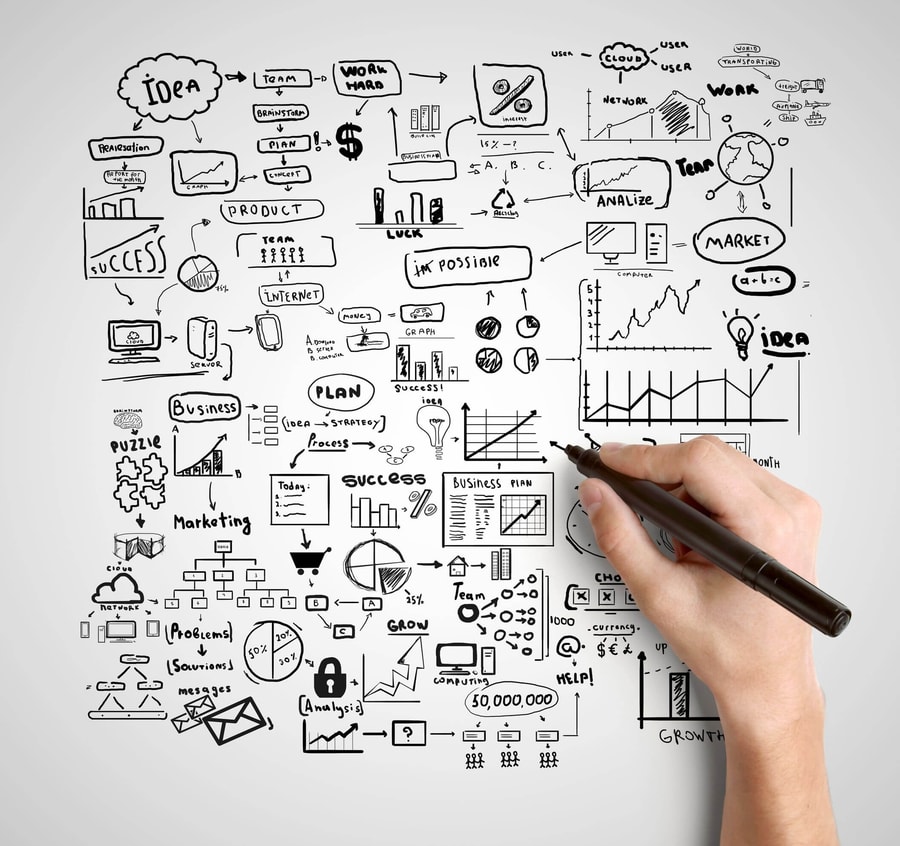The most important resource for improving creativity and innovation is time. Creativity can’t thrive unless you and your employees are given time to think, discuss and explore new ideas away from the distractions of ringing telephones and daily work routines.
Similarly, the next most important resource is space. Creativity emerges in calm, unpressurised environments, not in a busy office or on the factory floor. If you don’t have dedicated space for creative workshops or brainstorming, consider away days or off-site locations.
Of course, the fundamental resource for creativity is the ideas themselves. These come from happy, motivated people who understand the need for creativity and its benefits to the business.
The models of creative thinking
One of the best models of creative thinking and innovation is the six-step Osborne-Parnes Creative Problem Solving Model (CPS). In this model at each stage there is something to be found: objectives, facts, problems, ideas, solutions and acceptance. This model is useful for its emphasis on defining your goals, conducting research and firmly identifying the problem to be solved before any actual ideas are generated.
Another useful model is the Directed Creativity Cycle. This is visually more complex, and conceptualises creativity and innovation as a continuous process rather than a linear task. In this model, the four stages of preparation, imagination, development and action form a continuous circle of actions to generate a constant stream of creative ideas.

The most common barriers to creativity and innovation are resistance and criticism of new ideas. This need not be intentional, but could simply be old habits and assumptions, and a feeling that innovations represent a challenge and criticism of the status quo. In essence, the major barriers are cultural and behavioural ones.
The other major barriers are more practical, such as the lack of processes or environments in which to generate new ideas. Creativity and innovation require time to be set aside, free from the demands and distractions of day-to-day work. They also require some mechanism by which ideas can be passed to the bosses or taken forward, without which staff will have no motivation to innovate.
When an employee shows a spark of creative potential, it’s essential to support and encourage them. You can do this simply by verbally acknowledging their creative ideas and reaffirming how important creativity is for the success of the business.
It’s important to strike the right balance between encouragement and pressure. Telling the employee that they need to come up with a brilliant new idea fast is unlikely to motivate them and will probably inhibit the creative process. Instead, give them the time and space to be creative and avoid criticising their ideas. Not every idea will be good, of course, but the employee will need to feel that they can express any idea without fear of embarrassment or ridicule.

How can you measure creativity?
To measure the rate and quality of innovation in a business, you’ll need to look at several metrics. These include the number of new ideas being created per employee or department, the fraction of new ideas that are taken forward for development, and the financial benefit to the business of these ideas.
To assess the financial benefit, you’ll need to look at the time and resources that the business is dedicating to innovation processes, along with the new business and turnover that the innovations are attracting. This will essentially be a return on investment (ROI) for innovation, and tracking this measure is a good way of seeing whether your innovation processes are improving over time.
Have you got it?
You can’t teach someone to come up with great ideas, but creativity is something that can be nurtured and developed with the right kind of teaching, and with the right environment.
Teaching creativity means developing the skills to abandon assumptions and to avoid the self-censorship that can prevent new ideas from being expressed. It’s sometimes likened to entering a child-like state of openness. These techniques also include methods to spark new ideas, such as brainstorming and free association.
Creative potential may be innate in every one, and some suggest that it’s a fundamental part of the human condition. However, it still requires the right skills and a positive, supportive environment to enable people to release their creativity and to generate new ideas.
How much time should be set aside for it?
Setting aside time for innovation is important. Famously, Google allocates 20% of employee time, or one day per week, to explore new projects and ideas. The technology company 3M opts for 15%.
The exact amount of time you allow will depend on the nature of your industry and the needs of your business. The important thing is not so much the proportion of time you allocate, but the encouragement and support that you give your staff to use this time effectively.
This means giving them the space to think, a positive and non-judgemental culture that permits the free flow of ideas, and a realistic prospect that their idea might be taken forward.






These cookies are set by a range of social media services that we have added to the site to enable you to share our content with your friends and networks. They are capable of tracking your browser across other sites and building up a profile of your interests. This may impact the content and messages you see on other websites you visit.
If you do not allow these cookies you may not be able to use or see these sharing tools.